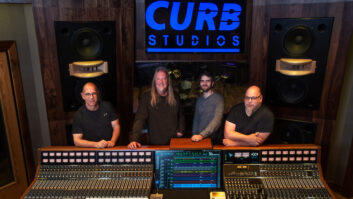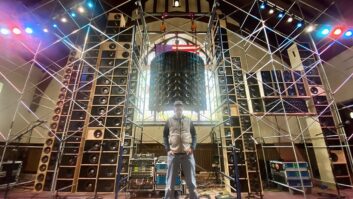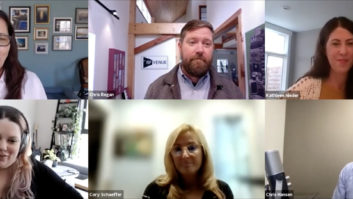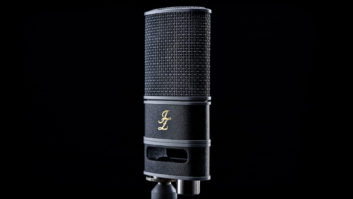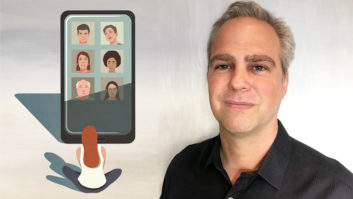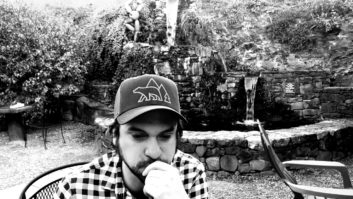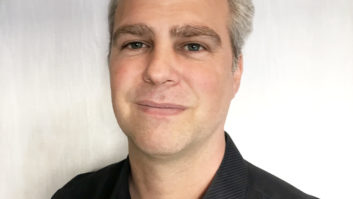In his Continuing Adventures In Software, Rich Tozzoli takes some time to visit with his friends and talk shop.
We all know about the ups and downs of our business, and how the current economy has affected us all. So I decided to ask a few close friends in the business to share some thoughts about the changing patterns of their gear and work in the last few years. Here’s what they had to say…
Bob Power—Producer/Mixer/ Engineer (Erykah Badu, A Tribe Called Quest, The Roots):
I’m working predominantly in my own room, and I’m very, very happy. Monitoring/listening position is rocksolid and never changes. I have all the analog and digital high-end goodies I could ever want. Workflow is much more efficient, concentration much better. Having the monitor/listening position static is huge—I’m hearing so much better than ever. Getting more and better work done in less time. Walking the dog is a great ear/ head break.
Leaning toward the digital realm (can’t do without my $50k 2-bus), recalls take 90 seconds; a good and bad thing. Good, because I can easily fix things that, days later, may bother me. Bad, because my clients know that! Overall, my clients seem consistently very pleased.
To a certain degree, the digital tools are there; it’s incumbent upon us to learn to use them better. That said, I still feel a hybrid (digital/analog) approach gets the best of both worlds.
Paul Antonell—Studio Owner, Clubhouse Studios (Natalie Merchant, Rusted Root, Earl Slick):
The sessions here seem to have a new flow. It’s an average of four days of tracking, which means everyone is in a hurry and setup is rushed more than usual. They also tend to involve a lot of recalls; so on bigger ones, stem mixes are normal. For the analog sessions (yes, people still cut basics on analog), I have been using ATR tape, which is fantastic, which makes me smile!
As for my latest gear, I have fallen in love with Barefoot [Micro- Main]27 monitors, as they make life so easy. The AEA KU-4 is the talk of all sessions here, and gets used all the time now.
Richard Chycki—Producer, Mixer, Engineer (Rush, Aerosmith, Seal):
Technology—new or old—is a tool in music. More powerful technology allows us more (and hopefully better!) options to do our work. Best thing in the last five years or so? My own mix studio—done up the way I work best. It’s not a new idea. Guys like Bob Clearmountain have done this for decades. But the concept has certainly gone more mainstream.
Recalls are now under 5 minutes, and it’s funny how long a surround session feels to recall because it takes “so long” to open. I still mix somewhat hybrid, with some choice bits of gear still working hard in the mix.
I still track with a lot of old-school technology that hasn’t changed since I began in the biz. So the same great player, great part, great instrument, great mic, great gear mantra applies. And like it’s always been, something new doesn’t necessarily mean that it’s better. I have to sift through the deluge of gear (new and old) to find what works best for me. Some things don’t change.
David Glasser—Mastering Engineer, Airshow Mastering (Grateful Dead, Hot Tuna, John Popper and the Duskray Troubadours):
My workflow has matured into a system that is streamlined and efficient, but more flexible than ever, with the ability to switch between stereo and surround at the push of a button. Also, I can accommodate a wider assortment of analog and digital processing (including DSD).
Lock-to-picture for DVD and film sessions has never been easier (even as the budgets get smaller!). While every mastering project is unique, I find myself gravitating to vintage or “vintage-type” tube equipment more often than not. Finally settled on Steve Jackson’s amazing Pultec EQs after owning several other tube equalizers.
The technology that has me most excited is Plangent Processing, a DSP process that can eliminate wow and flutter and other speed anomalies from analog tape transfers. I think it’s the most significant development in audio restoration since the introduction of Sonic Solutions’ NoNoise 20 years ago. I was lucky enough to use it with success on the recent Grateful Dead Europe 72-box set, which I mastered.
Chris Potter—Engineer/Mastering Engineer/Mixer (Sarah McLachlan, Brian Adams, Rufus Wainright):
I now do a majority of my work from home. I built a standalone mastering studio on my property, and it’s primarily used for mastering and mixing. Most work is done in the box with plug-ins and hardware inserts, but I also still have a Neotek console for analog mixing when needed.
I love the quick recallability of this setup, and it seems like a lot of decision- making is now taken as far as the mastering level, so this is important on today’s budgets. This setup keeps my overhead low and saves the client money, as there is not a separate cost for engineer and studio if I had to go elsewhere. Nearly all of my work is unattended [by the client], so my family life is not disrupted from working at home. If I need to track an artist, there are great studios in Vancouver to work at.
Chris Athens—Mastering Engineer, Sterling Sound (Coldplay, Johnny Cash, Beastie Boys):
Digital audio workstations have some incredibly precise tools that were unavailable only a few years ago, and the sheer speed and flexibility of nondestructive editing and EDL-based project management have had an enormous impact on the way we work.
Also, the ability to hear a project in its entirety and in sequence before beginning the process of adjusting EQ and dynamics has enabled us to approach the project in context from the very beginning. This is a huge advantage over the old linear process of throwing up the first song and beginning without any context at all. The fine-tuning of elements in a project as it takes shape is much more efficient and intuitive now than it was even just a few years back.
The improvement of digital audio tools and our greater understanding of how to use those tools have opened the door to so many creative options that I could not imagine working any other way.

